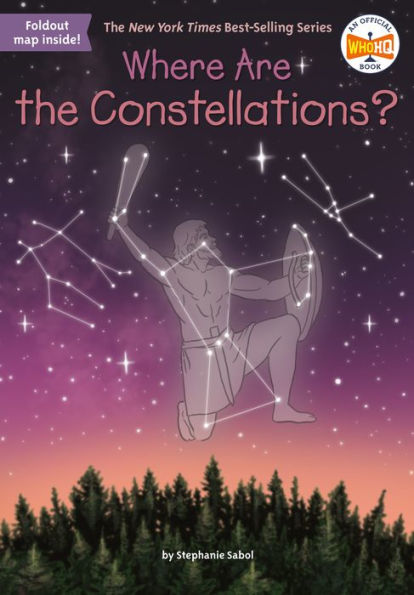Read an Excerpt
Where Are the Constellations?
Thousands of years ago, there were no calendars or clocks as we know them. People couldn’t tell time by glancing at their cell phones. Instead, they looked for clues in the sky—-most often by looking at stars—-to tell them what time of day or even what time of year it was. The ancient Egyptians, for example, eagerly waited for a certain star to appear. Once it did, it meant the flooding of the Nile River was about to start. When the flood receded, the soil was fertile and ready for planting crops.
There were also no accurate maps. However, the ancient Greeks noticed that one star always appeared in the same place—-we call it the North Star, or Polaris (Polar Star). Sailors used it as a guide to help them figure out in which direction they were heading.
Today, in cities, lights and pollution blot out many stars. However, on a clear night a person who is in the country can see thousands. Still, finding one star among thousands can be hard. So long ago in different cultures people looked for groups of stars, and they imagined them forming pictures by drawing lines from one star to another. It was like a connect—the—dots puzzle today. These “pictures” were easier to spot than just one star. Each picture was given a name and told a story.
Different cultures had different names and stories for the same group of stars. To people in North America, a group of seven stars looked like a long—handled soup spoon. They called it the Big Dipper (dipper is a word for this kind of soup spoon). However, in England, the same stars were known as the Great Plough. (A plough, more commonly spelled plow in the United States, is a farming tool that breaks up soil.) In Germany, the stars were known as the Great Cart.
Star pictures are known as constellations. The scientific study of stars—and everything else in the sky—is called astronomy. Astronomers of the twenty—first century know far more about the stars than ancient peoples did. They have learned what stars are made of, how long they live, and how they die. Yet despite all that has been discovered, even astronomers—-just like everyone else—-still look to the night sky with the same sense of wonder.
Chapter 1: Our Address in Space
Space. What is it? Well, it’s everything in the sky that is above Earth’s atmosphere—-a layer of gases that is about sixty miles thick. Nobody knows exactly how big space is. But it’s enormous, really too big for our minds to grasp. So, it’s helpful to think of Earth as having an address in space, just like when a person has an address where they live.
Earth—-the planet we live on—-is part of our solar system. Our solar system contains eight planets that orbit (circle) just one star, the sun. A star is a ball of hot gas—-mostly hydrogen and helium. Even though the sun seems huge to us, it’s actually a medium—size star. And since it’s 93 million miles away from us, it’s the closest star to Earth. During the day, the light from the sun is so bright, it blocks out other stars. But at night, after the sun has set, many other stars in the sky can be seen.
Our solar system is part of a galaxy, a city of stars. There are many galaxies. Our galaxy is known as the Milky Way. It was named because of the whitish hue it gives off that looks like milk spilled across the sky. It contains at least 100 billion stars!
The Milky Way looks like a pinwheel with four long arms. Our solar system is located in one of the four arms. It orbits around the center of the Milky Way at about 515,000 miles per hour. Even at that very fast speed it will take our solar system 230 million years to orbit all the way around the Milky Way’s center. Dinosaurs roamed our planet the last time our solar system was in this spot!
What is bigger than a galaxy? A group of galaxies. The Milky Way is part of a cluster of more than thirty galaxies called the Local Group. This group contains the Andromeda galaxy. Of big galaxies, it is the one closest to the Milky Way. (The Andromeda galaxy is twice as wide as the Milky Way.) Scientists predict that in the next few billion years the two galaxies will collide and form a super—galaxy.
As big as the Local Group is, it’s just a small part of a larger group of galaxy clusters called the Virgo Supercluster. It’s an enormous collection of more than two thousand galaxies. These galaxies are all part of our universe. The universe includes everything—-Earth, our solar system, the Milky Way galaxy, and beyond. The universe is everything in space that we can and can’t see.



